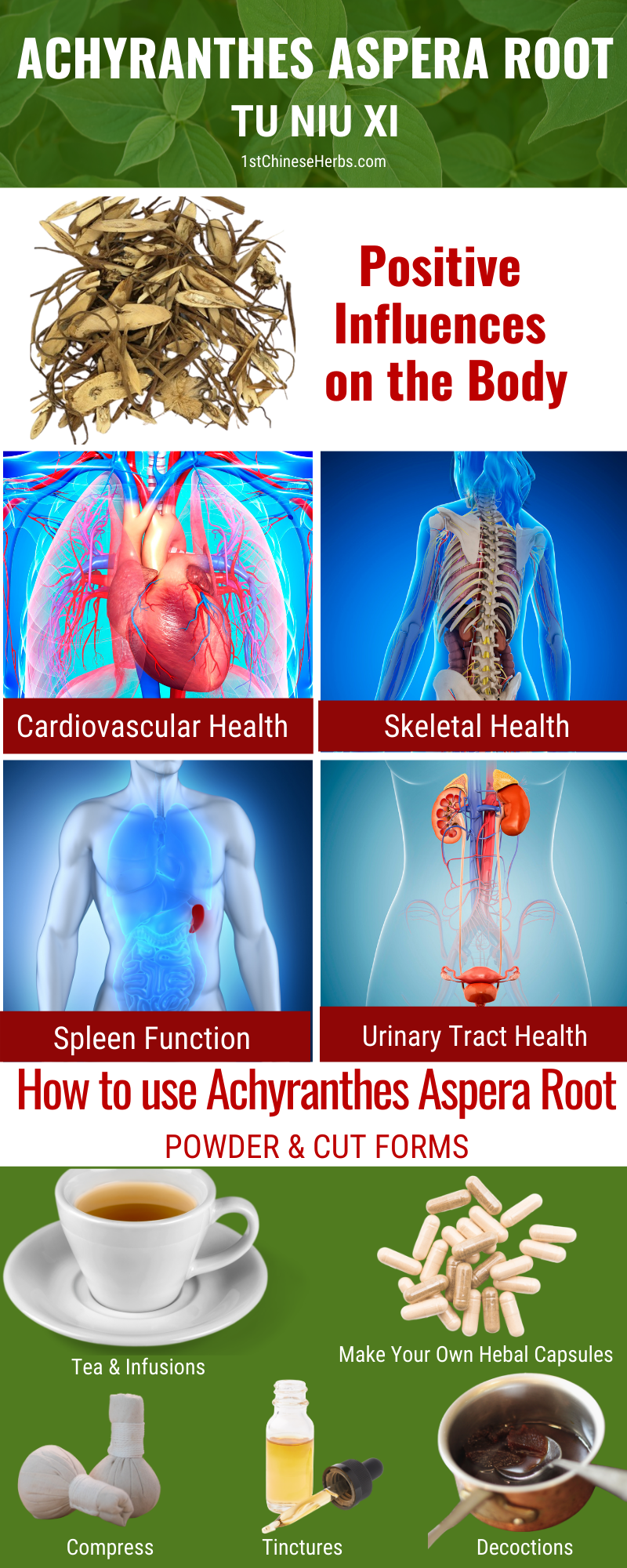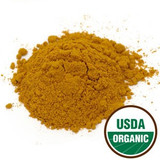

NuHerbs Lab Tested
Andrographis Herb (Chuan Xin Lian) - Cut Form 1 lb. - Nuherbs
Herbal Information for Andrographis Herb in Cut Form


Common Names: Devil's horsewhip, Prickly chaff flower, Chaff flower, Amaranthaceae
Botanical Name: Achyranthes aspera root
Pin Yin Name: Tu Niu Xi
Dosage: Follow doctor's instructions on how to use this product.
Caution: Do not use if pregnant or nursing. Do not use with Diabetes.

Traditionaly Achyranthes aspera rooti activates blood, dissipates blood stasis, dispels dampness, promotes diuresis. and clears heat and removes toxicity. Achyranthes Aspera is a small shrub that is indigenous to India, but can be found throughout the tropics. It has numerous medicinal uses.

Achyranthes Aspera Root Properties: Bitter, Sour, Neutral
Achyranthes Aspera Root Channels / Meridians: Kidney, Liver
Naturally Occurring Components in Achyranthes Aspera Root: oleanolic acid, sugar, triterpenoid saponins, ecdysterone, inokosterone, rubrosterone, polysaccharides, amino acids, iron, copper
![]()
Chinese Date Long Pepper Neem Leaf
References:
Saurabh Srivastav, Pradeep Singh, Garima Mishra, K. K. Jha, and R. L. Khosa. "Achyranthes aspera-An important medicinal plant: A review." Journal of National Product and Plant Resource. 2011 Volume 1 (1): 1-14. <http://scholarsresearchlibrary.com/JNPPR-vol1-iss1/JNPPR-2011-1-1-1-14.pdf>, R. Cannio, G. Fiorentino, A. Morana, M. Rossi, and S. Bartolucci, “Oxygen: friend or foe? Archaeal superoxide dismutases in the protection of intra- and extracellular oxidative stress,” Frontiers in Bioscience, vol. 5, pp. D768–D779, 2000., Y. Yamamoto, M. Higuchi, L. B. Poole, and Y. Kamio, “Role of the dpr product in oxygen tolerance in Streptococcus mutans,” Journal of Bacteriology, vol. 182, no. 13, pp. 3740–3747, 2000.


NuHerbs Lab Tested
Herbal Information for Andrographis Herb in Cut Form


Nu Herbs Lab Tested
Uncaria spp. (Gou Teng): The Hooked Vine That Calms the Mind and Balances the Body Few herbs in the world of Traditional Chinese Medicine offer the remarkable versati


Herbal Information for Eleuthero Root in Organic Powder Form Eleuthero root powder is a versatile and powerful herb that offers a host of benefits for the body and mind. Whether you're looking to...


Starwest Botanicals
Versatile 6x8 Reusable Muslin Bags: Your Eco-Friendly Solution for Tea Introducing Our Eco-Friendly 6x8 Reusable Muslin Bags: Versatile, Stylish, and Sustainable!


ActiveHerb
Cordyceps .9x Mushroom Extract Granules: Potent Energy and Immune Support Cordyceps mushroom extract granules are a concentrated form of the Cordyceps mushroom, specifically prepared for ease of


Nuherbs Organic
Herbal Information on Organic Japanese Bushy Knotweed Rhizome in Bulk Powder Form Hu Zhang: Unveiling the Miraculous Benefits of Japanese Knotweed Hu Zhang, also known as Jap


Thrive Through Fall: Immunity Power Herbs for a Healthier Season 1 pound each of Cut Astragalus Root, Cut Ginger, and Whole Forsythia Fruit. As the crisp autumn air arrives and the leaves begin...

ActiveHerb
Herbal Information for Raw Rehmannia Root Single Extract FormSheng Di Huang: A Comprehensive Overview


Z Natural Products
Herbal Information for Organic Turmeric Powder What Is The Historical Use Of Turmeric Root?Turmeric root has been used for over 4,000 years in various cultures for its medicinal, culinary, and


Plum Flower
Forsythia Fruit (Lian Qiao): Powerful Antiviral Herb for Immune Support, Detox, and Cold & Flu Relief in Traditional Chinese Medicine In traditional Chinese medicine (TCM) forsythia fruit is used...


ActiveHerb
Herbal Information on Isatis Root in 6X Extract Granule Form Unlocking the Power of Ban Lan Gen: A Comprehensive Guide to Isatis Root Powder Introducti


ActiveHerb
Herbal Information on Scutellaria Root in Concentrated Granules Comprehensive Guide to Huang Qin (Scutellaria Baicalensis)
